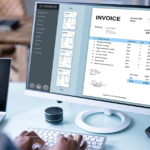
Around 90% of the claim denials in healthcare systems around the world (most of which are easily preventable) occur due to improper technical handling by the staff. By introducing the concept of the revenue cycle process in your healthcare facility, you can curb almost all of these technical issues. Strict implementation of revenue cycle management in hospitals result in an improved process of denial management and, therefore additional revenue of about US $5 million to your organization. {WHERE DOES THIS 5M FIGURE COME FROM AND APPLIES TO WHAT STRENGTH OF THE PRACTICE. I BELIEVE THAT THE SAVINGS OR IMPROVED REVENUE SHALL BE BUILT AROUND A DEFINED SCOPE This increased revenue doesn’t just benefit the providers but also the patients who utilize the providers’ services directly or indirectly.
MY NOTES: CONCEPT OF USING A CHECKLIST PRIOR TO THE SUBMISSION OF CLAIMS AND INCREASED “FIRST TIME SUCCESS RATIO” (THERE IS A SPECIFIC TERM USED FOR THIS. ED PLEASE IDENTIFY) HRLPS REDUCE THE DENIAL RATIO.
What is Revenue Cycle Process in Healthcare?
The revenue cycle process is the means of carrying out effective revenue cycle management and is most used by healthcare facilities in the U.S. {PLEASE ARTICULATE IT MORE CLEARLY & STRONGLY} Its sole purpose is to track the inflow and outflow of revenue by the patients. This revenue cycle process, or as some like to call it, the revenue cycle analysis begins when the patient checks in at the hospital for an appointment. Everything that follows from that point to when the patient successfully clears all their dues for their services availed lies under the process of revenue cycle management.
Importance of Revenue Cycle Process in Healthcare
- While the main benefit of the revenue cycle process is TO ENHANCE COLLECTION in provider revenue, it has multiple other positive influences on outcomes for the healthcare system. These not only benefit the providers but also the patients and/or clients. This is why the practice of revenue cycle analysis and medical billing reviews is encouraged by all healthcare service providers and facilities. It bridges the gap between the business and clinical sides of healthcare.
Identification and Resolution of Errors
Implementation of an adequate revenue cycle management PROCESS HELPS THE easy identification of the errors AND OVERSIGHTS THAT MAY BE occurring in the EXISTING revenue processes AND MAY HAVE GONE UNDETECTED. Denied claims could BE A RESULT OF improper coding or OMISSION OF information in the patient’s record chart like demographic information etc. USE OF A CHECKLIST HELPS early identification of these OMMISSIONS or denied claims AND allow THE OPPORTUNITY to RECTIFY AND resolve, enabling the providers to ENHANCE their reimbursements IN THE FIRST ATTEMPT. Through revenue cycle management, your medical practice can enjoy a more reliable foundation of incoming and predictable revenue as cash.

Decreased Burden on the Administration Department
With the time saved by the administration department because of an effective revenue cycle process, other important aspects of your healthcare facility can be focused on. More time and energy could be spent on coming up with new ways to improve your service provision and patient care. Focusing on one task at a time allows simplified interaction between the patients and the administrative staff, leaving the patient satisfied with the service providers and the services.
Preventing Healthcare Fraud
It is essential to use the revenue cycle process to prevent any mishandling of healthcare funds by the hospital staff and avoid its consequences. This way, the chances of inaccurate medical coding or upcoding (requesting a higher reimbursement value for services that would usually be provided at lower rates), whether intentional or unintentional, can be minimized.
Avoiding Patient Fraud
Patient fraud is another name for patient dishonesty and usually takes place in either of the two ways: false information provided by the patient and/or medical identity theft. Both of these hinder the effectiveness of the revenue cycle process, causing trouble and excess work for the healthcare facility. THESE problems can be averted BY APPLYING DETAILED verification of the patient’s identity via strict implementation of A WELL-DEFINED revenue cycle management PROCESS AND COMPLIANCE WITH HIPPA RULES.
Effective Ways to Review your Revenue Cycle Process
Putting the Patient First
By prioritizing your patient’s needs and establishing healthy staff-patient relationships, you can boost your revenue cycle process. The staff should be open to providing written and verbal explanations to the patient regarding their financial responsibilities. This way, the patient is satisfied with the services they receive at your medical care facility. The initiation of this positive relationship allows the patient to be more cooperative and encourages them to timely reimburse the provider.
Prior Collection of Patient Financial Responsibility
The revenue cycle process becomes disorganized if the patient cannot pay their dues on time. Mainly the services provided by the hospital or Medical practice are left unpaid due to non-eligible insurance claims. This sets off another series of hectic processes where a separate team has to be hired and dispatched to follow up on the unpaid medical debt by the client or patient.
Investing in Technology
It may seem like private insurance companies like Medicaid and Medicare spontaneously deny every submitted claim. This only happens when you are not fully aware of the updated technologies with diagnostic codes.
- When handled manually, it takes too much time to investigate medical billing reviews and unpaid claims, and resubmit their corrected versions. It reduces the time between offering a service and receiving payment for it by interacting with other health IT systems like electronic health record systems and billing systems.
- However, with the help of technology, you can speed up your revenue cycle analysis. The use of automated software at your healthcare facility helps you to get medical coding, eligibility verification, and billing alerts properly done in record time. The organization can also check where its revenue cycle has the scope of improvement by arranging billing data and producing corresponding reports. With the help of RCM, an organization can buy analytics software and use dashboards to determine or analyze revenue goals.

Automating Prior Authorizations
The first step in effectively improving your revenue cycle process is TIMELY Verification of Benefits (VoB). Meaning. verifying the insurance coverage of every patient that walks into your healthcare facility. Since a large number of insurance companies are changing eligibility requirements to claim insurance, it is likely to result in more denied claims for your services. Your team needs to verify all tracks of insurance coverage before proceeding with clinical trials.
Improving Charge Coding
Updating the captured revenues for the services provided at a healthcare facility at the right time is one of the best ways to improve your revenue cycle analysis. In most cases, such as the outpatient pharmacy and nursing procedures, revenue is lost due to untimely or improper documentation. These could include missing or miscalculated charges in-hospital data, such as that for provision of injections or IV therapy, or reporting of units of drugs provided to the patient while under observance at your facility. To prevent such errors in the procedures, the pharmacy and the nursing staff will be required to review charts for missed charges.
Efficient Claim Filing
To keep up with your claims, your team needs to file them on time, AND ACCURATELY. This way, you are likely to file claims before deadlines. While most healthcare facilities allow a period of one year from the date of services provided to file claims, some private sectors may only offer a maximum of 90 days. It is important to meet deadlines for medical billing reviews and filing relevant claims so the processes next in line can be carried out in due time.
Denial Management
When your revenue cycle process is not well equipped to incorporate the tips mentioned above in its practice, it may result in denied claims. It is imperative to have a separate team of professionals to monitor and track denials for an efficient healthcare system. A denials prevention program should be set up AS A PRIORITY to mitigate the substantial risks of denials. This program should be made accessible to the entire hospital staff.
See Also: Taking The Road To Emergency Medicine
Conclusion
With the effective use of revenue cycle analysis, a healthcare facility can avoid claim denials, technical errors, and fraud investigations while promptly receiving reimbursements for the services provided. Additionally, this is likely to boost their revenue, which can later be invested in improving the quality of patient care.
Check our blog key points for billing and coding critical care services and better understand how to establish an effective and time-saving means to the revenue cycle process.







No comment yet, add your voice below!